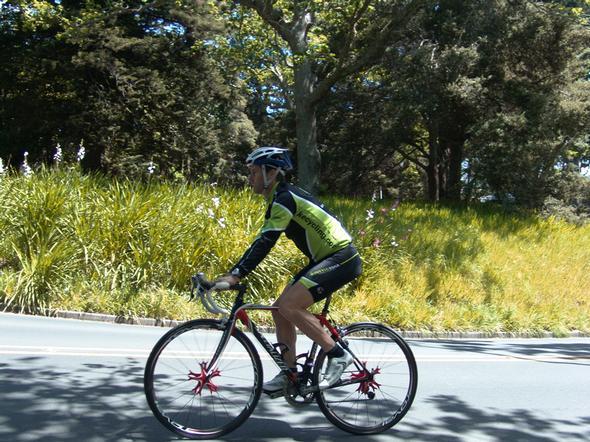
Ride Faster For Less Effort
Eighteen years ago I started cycling and joined the Ngaruawahia cycling club.
The older cyclists took me under their wings and taught me the essential skills and technique so I could ride as fast as possible. Since then cycling has changed. Fun rides have taken over as mass participation events and only a small percentage of the people that ride, join clubs, and of the clubs around very few teach people how to ride. We take it for granted that if we can push the pedals we are doing ok. After all most of us learnt to ride as a kid – isn’t it the same on your one to ten thousand dollar road bike? Well, no.
With very few people learning correct posture, technique, and skill through the club scene we are finding more and more people are extremely inefficient on their bikes. This isn’t surprising – cycling isn’t the most natural thing in the world. In fact it is extremely unnatural as our bikes did not grow organically out of the earth or fall from the trees. This means we have more potential to ride wrong than ride right. ‘I’ve learnt more in one hour than I have in the past ten years’ is the most common comment we hear after taking someone on a skills session, of which we do many
each week.
Correct technique, posture, and skill enable you to ride faster for less effort. It also enables you to:
1. Respond to changes in pace
2. Climb faster
3. Delay fatigue
4. Maximise balance, stability and rotation of your limbs, and the bike
5. Reduce muscle soreness
6. Be more comfortable on the flat roads
How? There are too many examples to go over in one article, but here is one example: Seated climbing.
The most effective way to climb while seated is to:
1. Look up the road. Avoid looking at the road directly in-front of you. I know it’s awful to stare at the top of the climb, many painful revolutions away, but looking up the climb forces your shoulders and back into a good strong position.
2. Climb with your hands on the “tops” of the handlebars, and relax your shoulders down. No shoulder ear rings!
3. Breathe deeply, and keep your breathing slow and controlled. It is easy to fall into a habit of puffing at a high frequency and that does minimal to get oxygen into your muscles. You are just recycling the dead space in your tubes – force the air in, keep it there, then exhale – all slow and controlled.
4. Loose hands: avoid the death grip on the handlebars, and in so helps to avoid upper body movement.
5. Tight abs – clench them! And limit shoulder or upper body side-to-side moment. Every inch moved is less power into the pedals.
6. Sit in your normal pedalling position, or slightly forward. Don’t push yourself back in the saddle. Staying forward enables you to keep on top of the pedal to maximise cadence.
7. Pull up through the pedal stroke as much as you push down. There are 360 degrees to the pedal stroke – use all of it. Don’t use one leg to push the other leg around.
8. Push through your forefoot when pushing down on the pedals, and whip your forefoot back up during the up stroke. This avoids “heel” down, which limits the ability of your lower limb muscles to work. Pushing through your forefoot gets your calfs going, and enables them to contribute to producing more power – which is what we want!
9. Aim to climb at a high cadence, 80/90/100 or even higher. To keep on top of your cadence high aerobic fitness, appropriate gears, and point (4) are essential.
Learn anything new?
If you did, you more than likely have plenty of room to improve your speed for less effort just by improving your technique in other aspects of your riding. When we are working hard, or under pressure in an event we always fall back on our habits, so if you make your habits those of excellence – you can only ride well – even when you are breathing out your ears on the rivet! So find out what you need to do to ride as effectively and efficiently as possible - and let yourself fly.
